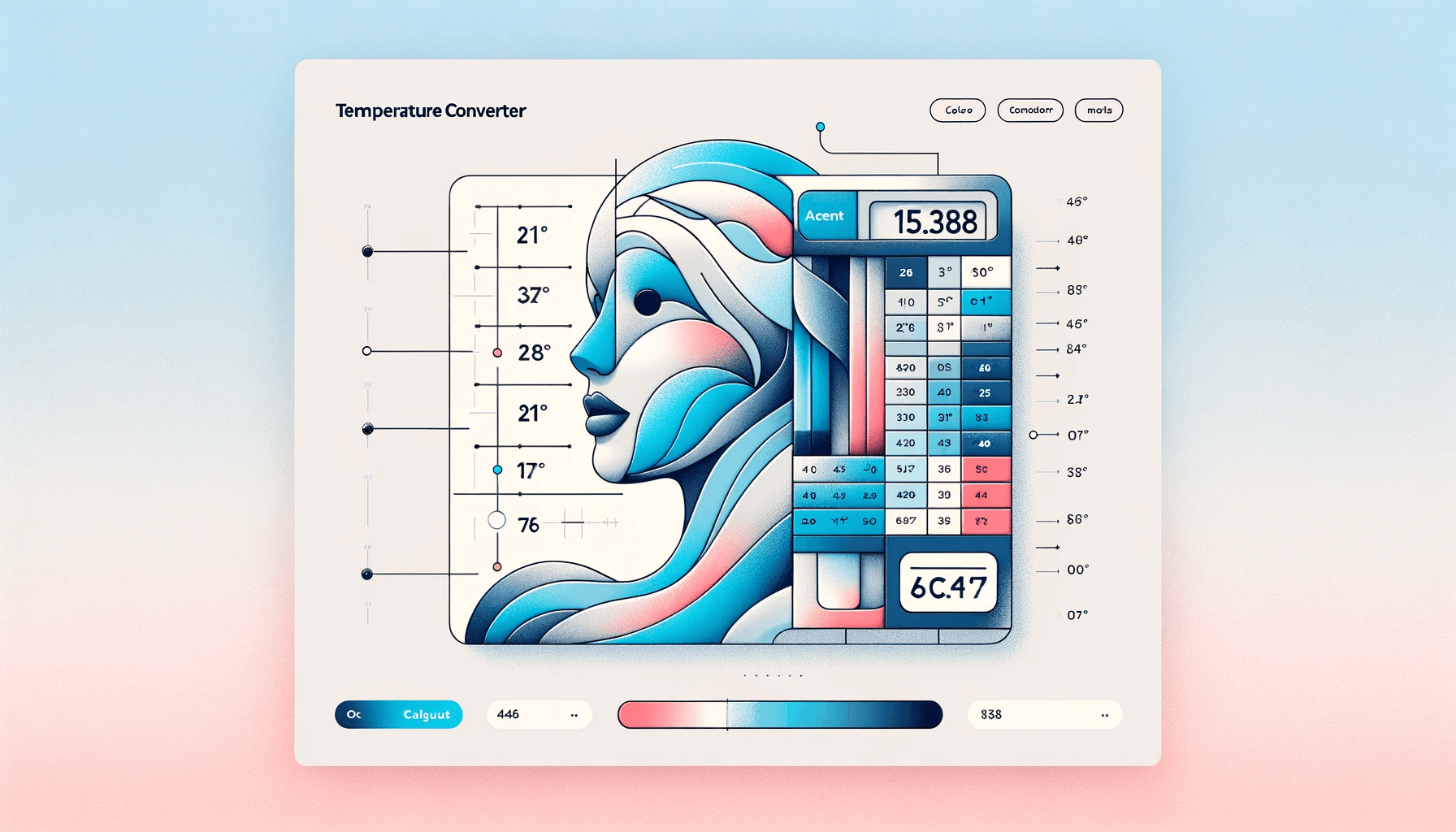Temperature is among the most commonly measured physical quantities, essential in daily routines, and critical in scientific, industrial, and culinary applications. Yet, different regions and industries often favor their own scales—such as Celsius (°C), Fahrenheit (°F), or Kelvin (K). A Temperature Converter Calculator bridges these units’ gaps, allowing quick, accurate conversions so users can communicate conditions effectively and follow proper guidelines. Below is a thorough look at how temperature conversions function, why a dedicated calculator is helpful, and how best to employ one in various scenarios.
Introduction to Temperature Conversion
The concept of temperature describes the thermal energy level of a substance or environment. Whether checking the day’s weather forecast, setting an oven temperature, or calibrating a laboratory device, referencing the correct temperature scale is key. Regions like the United States predominantly use Fahrenheit, whereas most of the world relies on Celsius. Meanwhile, scientists often prefer Kelvin for theoretical work. Converting reliably among these scales ensures consistency and prevents potential errors, especially where precise temperature control or measurement is vital.
Why a Temperature Converter Matters
- Global Communication: As business, travel, and research become increasingly international, having the correct scale or matching local usage fosters clarity and avoids confusion.
- Industry Requirements: Some industries set standards in Celsius, while others might specify Fahrenheit. A converter ensures compliance with regulations or client expectations.
- Quality Control: Overlooking accurate temperature adjustments can harm product consistency (e.g., in food production) or hamper experimental validity (in labs).
- Everyday Convenience: From cooking instructions referencing Fahrenheit to weather forecasts in Celsius, a converter helps users easily interpret or share information.
Key Temperature Scales
Though many scales exist, three dominate current practice:
- Celsius (°C): Used by most countries worldwide, based on water’s freezing (0 °C) and boiling points (100 °C) at standard atmospheric pressure.
- Fahrenheit (°F): Predominantly used in the United States, with water freezing at 32 °F and boiling at 212 °F.
- Kelvin (K): The SI base unit for thermodynamic temperature, starting at zero (0 K), where no thermal energy remains. This scale is favored in scientific contexts.
Additional scales include Rankine for specific engineering fields or Réaumur historically, but these are less commonly seen in modern practice.
The Role of a Temperature Converter
A Temperature Converter Calculator offers:
- Instant Unit Shifts: By inputting a known temperature, users instantly get conversions across multiple scales (Celsius to Fahrenheit, Fahrenheit to Kelvin, etc.).
- Versatile Applications: Whether in a digital cooking thermometer or an industrial sensor readout, the tool ensures that anyone reading the result can interpret it correctly.
- Error Prevention: Minimizing the chance of manual arithmetic mistakes prevents over- or under-heating items—crucial in processes like chemical reactions or sterilization procedures.
- Convenience for Non-Experts: People unfamiliar with formula-based conversions can rely on the calculator’s automated process.
Benefits of a Dedicated Calculator
- Time Savings: No need to recall conversion formulas or do repeated arithmetic, which is especially helpful under time pressure in kitchens or labs.
- Reduce Mistakes: Automated logic avoids slip-ups that might ruin a recipe or compromise experimental results.
- Batch Conversions: Users with multiple readings (e.g., data sets from different equipment) can quickly standardize them into the same scale.
- Educational Resource: Students or trainees can learn about relationships between scales by seeing immediate side-by-side results.
Typical Applications
- Culinary Settings: Recipes from different countries might list oven temperatures in °C or °F, and a converter ensures consistent cooking outcomes.
- Weather and Travel: Comparing foreign weather reports to what travelers recognize at home fosters better wardrobe planning and comfort.
- Scientific Research: Experimenters calibrate instruments or share data in Kelvin for universal clarity, while initial readings might come in °C or °F.
- Industrial Processes: Factories monitoring chemical or metalwork processes might use Celsius in one region. In contrast, equipment imported from another region logs Fahrenheit.
Challenges and Considerations
- Rounding Practices: Different contexts demand different decimal precision; some calculations might need finer increments than others (e.g., half a degree vs. tenths or hundredths of a degree).
- Mixed Systems: Ensuring everyone references the same scale remains crucial in cross-border or space-based endeavors. Even slight confusion about scale or rounding can cause real-world mishaps.
- Data Format: Tools must handle integer and decimal input, with consistent unit labeling in outputs to prevent user misunderstanding.
- Limitations in Rare Scales: While Celsius, Fahrenheit, and Kelvin are the mainstays, specific niche fields still reference lesser-known units, possibly outside a basic calculator’s scope.
Best Practices for Using the Calculator
- Verify Initial Scale: Double-check if the measured temperature is in the unit you assume before conversion to avoid “double conversions.”
- Decide Required Precision: A single decimal place for cooking suffice; in a scientific lab, more decimals or absolute precision might be needed.
- Consistency Across Team: In a collaborative setting, standardize which scale to use post-conversion to reduce internal miscommunications.
- Retain Documentation: Especially in official logs or recipes, note the original scale and the converted one, including any rounding policy.
Future Trends
- Real-Time IoT Integration: Smart home devices could auto-convert temperatures from local weather reports or ovens to match user preferences (e.g., from °F to °C).
- Voice-Enabled Assistants: Quick spoken queries to AI systems (“Convert 350 degrees Fahrenheit to Celsius”) speed up tasks in kitchens or industrial floors.
- Additional Scales or Data: Tools might integrate environmental factors, e.g., adjusting perceived temperature (wind chill or heat index).
- Augmented Reality Overlays: Real-time readings from digital thermometers displayed with layered conversions via smartphone cameras, beneficial for remote or large-scale inspections.
Conclusion
A Temperature Converter Calculator is indispensable for bridging everyday and professional temperature scales, ensuring precise, timely conversions. From cooking a foreign recipe to coordinating an international lab experiment, these calculators help maintain consistency, reduce errors, and foster understanding across global communities. As technology advances and cross-cultural interactions multiply, accessible, intuitive temperature conversion tools will remain a hallmark of efficient, informed decision-making in all walks of life.


